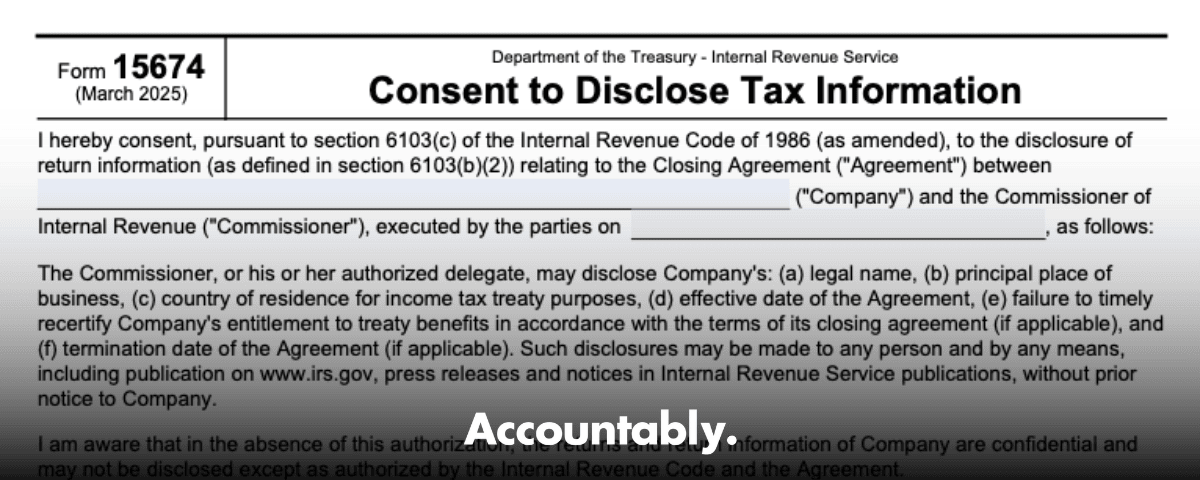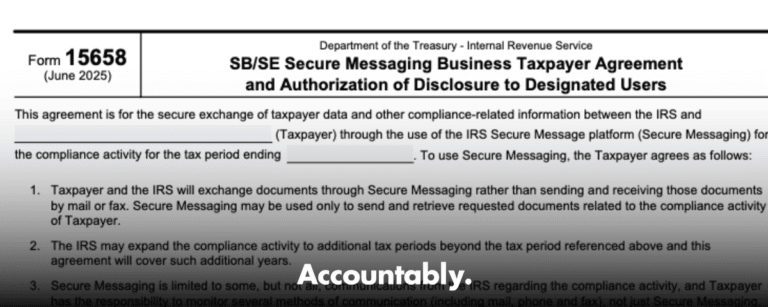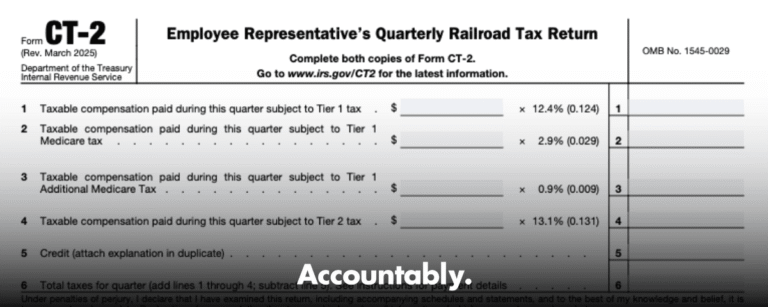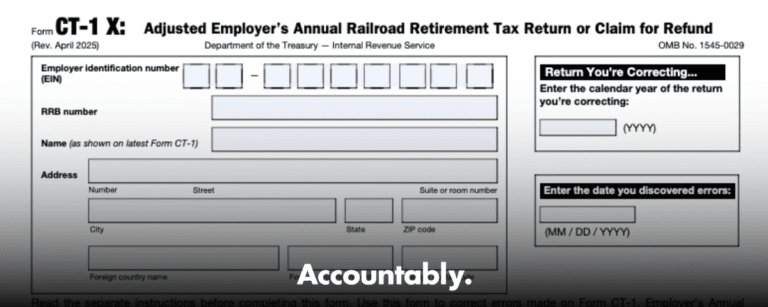Scale Your CPA Firm Without Adding Headcount
Build your offshore team that works your way, trained, compliant, and white-labeled under your firm.
👉 Book a Discovery Call
If you have ever felt that same mix of pressure and guesswork, this guide is for you. You will learn exactly how Maine’s Form 15674 pupil counts work, how the Commissioner turns those counts into required teaching positions, and how salaries and benefits are priced using the statewide salary matrix and benefit percentage. We will keep this practical, accurate, and audit‑ready.
Key Takeaways
- Form 15674 is the enrollment report each SAU uses to set official pupil counts that drive required teaching positions. Counts are taken under §15674(1)(C) or (D).
- Statutory student‑to‑teacher ratios are Kindergarten 15:1, Elementary 17:1, Middle 17:1, High 16:1, with past temporary exceptions noted below.
- The Commissioner identifies required positions using your verified counts, then prices them with the §15677 salary matrix. A statewide benefit percentage is applied to arrive at total costs.
- Choose paragraph C for resident‑based counts or paragraph D when adjusted counts apply due to tuitioning, parental choice, or transfers.
- File on time, validate data, and retain documentation. Your submission becomes the basis for staffing and EPS teaching staff costs in the next fiscal year.
Clean counts, correct paragraph selection, and consistent rounding give you predictable positions and costs.
What Form 15674 Does, In Plain Language
Form 15674 is the mechanism SAUs use to report the auditable pupil counts that the Maine Department of Education applies when it determines how many school‑level teaching positions you need. Those positions are not a guess. They are calculated against grade‑band ratios set in statute and applied uniformly across the state.
Hundreds of Firms Have Already Used This Framework.
Join the growing list of CPA and accounting firms using Accountably’s Offshore Playbook to scale faster.
💬 Get Your FREE Playbook
👉 Visit Jugal Thacker’s LinkedIn
Send him a connection request and message “Playbook” to get your copy.
Once the Commissioner identifies the number of positions for your unit, those positions are priced using the salary matrix in §15677. After that, the statewide average benefit percentage is applied to produce total salary and benefit costs for teaching staff. Your counts, therefore, influence not just headcount, but also the dollars that flow into your EPS calculation.
This article focuses on practical steps, documentation habits, and the exact statutory links you will cite during audits or budget hearings. For legal interpretation, consult counsel.
Why This Matters To You
- Your counts are the official basis for staffing, so small errors can move positions up or down. That affects class size, scheduling, and budgets.
- The ratios are fixed in law, so the best way to manage outcomes is to get the inputs right, every time.
- Because salaries are priced from a statewide matrix and benefits from a statewide percentage, consistency is the point. Local pay schedules do not change the estimate that appears in the EPS calculation.
Statutory Authority and Recent History
Maine law assigns the Commissioner a clear duty each year to determine the salary and benefit costs of school‑level teaching positions and to identify how many positions are required for each SAU. That determination is built on your §15674 pupil counts and the ratios specified in §15678.
Improve Margins Without Compromising Quality
Offshore staffing helps firms deliver more, scale faster, and stay compliant, without adding local headcount.
👉 Book a Discovery Call- Ratios in effect today are Elementary 17:1, Middle 17:1, High 16:1, and Kindergarten 15:1. The 16:1 Elementary exception applied only for FY 2021‑22 and FY 2022‑23. A temporary 16:1 Middle exception applied for FY 2022‑23 and sunset July 1, 2023.
- The salary matrix statute was updated in 2023, with a specific update rule beginning in FY 2025‑26 to reflect CPI trends and any minimum wage increases for educational technicians and support staff under §4016(3).
Quick Statute Map
| Element | Statutory basis |
| Pupil counts used for staffing | §15674(1)(C) or (D) |
| Student‑to‑teacher ratios | §15678(2) |
| Required positions, by SAU | §15678(3) |
| Salary matrix pricing | §15677 |
| Total salary and benefits method | §15678(4)–(5) |
| EPS link to teaching staff costs | §15676(1) |
Sources: Maine Legislature Title 20‑A §§15674, 15676, 15677, 15678.
Who Must File
Every school administrative unit files Form 15674. Uniform counts allow the state to apply the same ratios and matrix across all SAUs. Whether you are a large regional district or a small rural unit, your submission is required each year. If you do not submit, the Commissioner cannot include your counts in statewide determinations, which can delay or distort staffing and costs in the EPS run.
Include all pupils that belong in your applicable paragraph method, and make sure special programs that affect classroom staffing are included. Above all, confirm you are using the correct paragraph, C or D, for each SAU component.
Reporting Timeline, At A Glance
Maine times the annual reporting window so the Department can identify required positions and price salary and benefits for the upcoming fiscal year. Exact dates shift with the state’s data calendar, so set internal cutoffs ahead of the Department’s window and align your Synergy uploads or data extracts accordingly.
- Validate counts against §15674 methods before you submit.
- Reconcile grade‑band totals so ratios will compute correctly.
- Confirm that any year‑specific exceptions in statute are handled. For example, the Elementary 16:1 exception applied only to FY 2021‑22 and FY 2022‑23, and the Middle 16:1 exception applied for FY 2022‑23 and then sunset.
Adjustment and Appeal Period
After the Commissioner issues the determinations, the Department opens a defined adjustment and appeal period for that fiscal year. File any appeal with verifiable evidence, such as enrollment records, attendance audits, or board‑approved documentation that clarifies the applicable paragraph or corrects a data error. Do not wait. Late filings are rarely considered and determinations stand for the year.
Treat your submission like you would a financial close. Lock the numbers, preserve evidence, and be ready to explain your methods.
Enrollment Data You Must Get Right
Start with authoritative counts. For operating costs and staffing, the state uses the §15674 counts you report, which are built from October 1 pupil counts and related components, averaged per statute, with a three‑year option triggered when an SAU’s enrollment declines by 10 percent or more. Public preschool counts follow the most recent October 1 count before the year of funding.
- Use rigorous validation. Reconcile school‑level records to the SAU total.
- Keep privacy intact and maintain an audit trail for each adjustment.
- Retain documents so you can show how you arrived at the submission if questioned later.
Picking Paragraph C or D, Without Guesswork
Paragraph C generally reflects resident pupils based on the average of recent October 1 counts. Paragraph D applies when adjustments are needed, for example, when tuition arrangements, parental choice, or transfers change who should be counted for funding and staffing. Confirm your statutory category for each component of the SAU and document your rationale. That choice flows into required positions and then into costs.
Quick Self‑Check
- Do we have tuitioned‑out grades that change who we count at a given level, as described in §15674(2)?
- Did our enrollment decline by 10 percent or more, which can trigger the three‑year averaging rule under paragraph D?
- Are alternative education students included per §5104‑A, as referenced in §15674?
Student‑to‑Teacher Ratios By Grade Level
Maine’s staffing model is ratio‑driven. Apply these ratios to your verified counts to derive required positions:
- Kindergarten: 15:1, effective July 1, 2018.
- Elementary: 17:1.
- Middle: 17:1, effective July 1, 2017.
- High: 16:1, effective July 1, 2017.
Historical exceptions matter only for the affected years. Elementary operated at 16:1 for FY 2021‑22 and FY 2022‑23. Middle had a temporary 16:1 for FY 2022‑23 that sunset on July 1, 2023. For current filings, revert to the standard ratios above unless the Legislature enacts a new exception.
Use the statute that is current for the fiscal year you are filing. Do not carry old exceptions forward.
How The Commissioner Converts Counts Into Positions
The Commissioner identifies the number of required school‑level teaching positions for your SAU using your §15674 counts and the ratios listed in §15678. The calculation is straight math, but documentation is where most errors creep in. Segment enrollment by grade bands, apply the ratio, then follow the state’s rounding guidance consistently across the unit. Keep a record of any cohort anomalies or small schools where instructional design affects class groupings.
Worked Example
Assume an SAU reports the following verified counts:
- Kindergarten: 135
- Elementary: 510
- Middle: 340
- High: 448
Required positions before rounding:
- K: 135 ÷ 15 = 9.0
- Elem: 510 ÷ 17 = 30.0
- Middle: 340 ÷ 17 = 20.0
- High: 448 ÷ 16 = 28.0
In this simplified scenario, the totals are whole numbers. In the real world, you will see decimals. Apply the state’s rounding rules the same way, every time, and document the method you used in your submission memo so the review team can follow your logic.
Salary Matrix And Estimated Salary Costs
After positions are identified, the Commissioner prices them using the statewide salary matrix in §15677. This matrix reflects the relationship between average staff salaries, years of experience, and education levels across Maine. You do not substitute local salary schedules in this step. The matrix governs the estimate for EPS purposes.
Recent changes matter. Beginning in FY 2025‑26, the matrix update must account for CPI trends and any increase in the minimum hourly wage of educational technicians and other school support staff under §4016(3). That helps keep the matrix aligned with statewide labor conditions.
Price required positions with the matrix, then move to benefits. Keep your local pay conversations separate from this calculation.
Benefit Percentage And The Total Cost Number
Once estimated salaries are calculated from the matrix, the Commissioner applies a single statewide benefit percentage to those salary dollars. That percentage captures health insurance, retirement contributions, and other mandated benefits on a statewide average basis. The result is the total salary and benefit cost for school‑level teaching staff in your SAU.
- Multiply your estimated salary total by the statewide benefit percentage to compute benefits.
- Add benefits to salaries to get the total cost.
- Use the current year’s percentage. The Legislature authorized this uniform approach so EPS uses one standard rather than unit‑specific rates.
One‑Page Formula
- Estimated salaries, by category, priced with §15677 matrix.
- Benefits = Estimated salaries × Statewide benefit percentage.
- Total cost = Estimated salaries + Benefits.
Documentation Habits That Save You Time
Think of this as your audit kit. Keep it simple and thorough.
- A paragraph selection memo that explains why C or D applies, with citations to §15674.
- A grade‑band worksheet that shows counts, ratios, math, and rounding.
- A salary pricing sheet that ties positions to the §15677 matrix categories.
- A benefits sheet that shows the official statewide percentage used in the EPS run.
- Dated exports from Synergy or your SIS, plus sign‑offs from principals or data managers.
If a reviewer can retrace your steps in five minutes, you have done it right.
Submission Process And Data Verification
You will submit counts in the Department’s prescribed format, typically through Synergy or approved data pipelines. Maine DOE publishes guidance, office hours, and webinars for student data entry and reporting throughout the year. Use those supports, and time your uploads to match the state’s validation windows.
- Validate schema and cross‑field logic before you upload.
- Track acknowledgments and timestamps.
- Retain correspondence in case you need to reference approvals or clarifications later.
Once the Department verifies your counts, the Commissioner’s team completes the positions, salary pricing, and benefit application for the EPS calculation.
Common Errors We See, And Quick Fixes
- Using the wrong paragraph. Confirm C or D up front. If you tuition out an entire level, review §15674(2) before finalizing.
- Carrying forward expired exceptions. The Elementary 16:1 and Middle 16:1 exceptions have sunset. Do not apply them to current years.
- Inconsistent rounding. Follow the state’s rounding guidance the same way in every grade band. Document it.
- Substituting local salary schedules. Use the §15677 matrix to price required positions for EPS.
- Missing evidence. Keep October 1 headcount reports, sign‑offs, and SIS exports with dates and user IDs for an audit trail.
Control Checklist
| Control | What to check | Why it matters |
| Pupil basis | Paragraph C or D alignment | Accurate required positions |
| Ratios | K 15:1, Elem 17:1, Mid 17:1, High 16:1 | Correct classroom allocation |
| Rounding | Consistent with state guidance | Comparable results year to year |
| Salary pricing | §15677 matrix only | EPS cost validity |
| Benefits | Current statewide percentage | Accurate total cost |
Sources: §§15674, 15677, 15678 and DOE data reporting guidance.
Practical Examples You Can Borrow
- Small elementary schools with multi‑age classrooms often worry that ratios will overstate positions. The solution is not to change the ratio. It is to ensure your counts and grade‑band assignments are correct, then document the instructional model as context for scheduling.
- Units with a sudden enrollment decline may qualify for the three‑year averaging rule under §15674(1)(D). Run both the two‑year and three‑year averages, compare results, and retain both calculations. Use the method statute requires for your situation.
Charter Schools Note
Public charter schools follow distinct counting rules in §15683‑B. If you support a charter, review that section, especially how economically disadvantaged counts are calculated using free or reduced‑price meal percentages.
Light Touch On Brand
This guide lives on Accountably.com’s Form 15674 blog. Our team focuses on disciplined delivery in regulated workflows, so the emphasis here is structure you can trust. If you need help pressure‑testing your documentation or building internal checklists for count reconciliation, we can share templates. No pitches, just process.
FAQs
What exactly is “Form 15674,” is it a paper form?
It is commonly used shorthand for the official pupil counts used under §15674. You submit data through DOE’s systems, for example Synergy, within the annual reporting window, and those counts drive staffing and costs.
How do I decide between paragraph C and paragraph D?
Use paragraph C for resident‑based counts in most cases. Use paragraph D when adjustments apply, including tuition arrangements, transfers, or parental choice that change who you count. Document your reason and cite §15674 in your memo.
Do preschool pupils count?
Yes. Beginning with funding for 2015‑16, the pupil count for 4‑ and 5‑year‑olds in public preschool uses the most recent October 1 count prior to the year of funding.
What ratios do I apply this year?
Unless a new law changes them, apply Kindergarten 15:1, Elementary 17:1, Middle 17:1, High 16:1. Past exceptions were time‑limited and have sunset. Always check §15678 for your fiscal year.
How are salaries and benefits priced for EPS?
The Commissioner prices salaries using the statewide §15677 salary matrix, then applies a statewide benefit percentage to those salary dollars to produce total cost.
What happens if I miss the reporting window?
Your unit’s counts may not be included in the statewide determinations on time, which can affect the identification of required positions and delay cost calculations. Contact DOE immediately and follow their guidance.
Conclusion
Treat Form 15674 like a financial close. Verify your data sources, pick the correct paragraph, apply ratios exactly, and document every step. One SAU we supported cut reconciliation time by half in the next cycle simply by creating a short “counts to positions” memo, a rounding policy, and a one‑page matrix pricing sheet. The math is straightforward. The wins come from clean inputs and repeatable process.
Simplify Delivery, Improve Margins, Stay in Control.
Offshore support that works exactly like your in-house team.
💼 Let’s Talk







